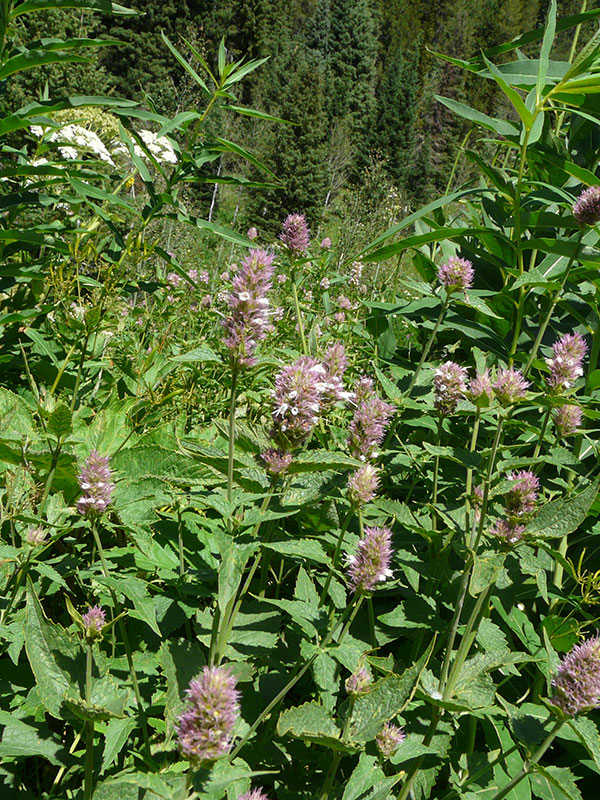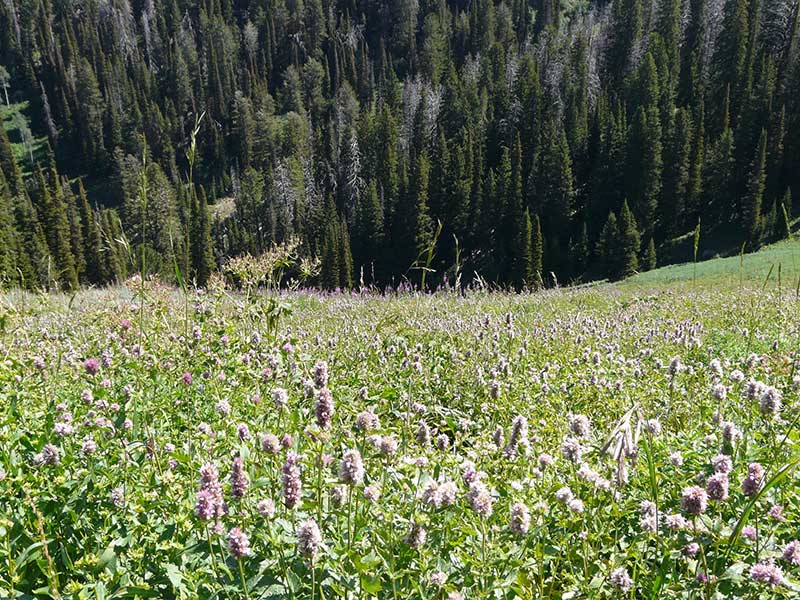Agastache urticifolia / western horsemint
- short or tall flower heads ranging from pale to deep purple
- square stems, opposite leaves
- minty aroma
- common along trails, especially in sun
Also known as: giant hyssop
Once mid-summer hits, horsemint is quite common along mountain trails. Although its seeds are quite small and survival of seedlings is limited, it has quite robust and capable rhizomes that lead to dense clonal populations; you’ll find this plant growing in clumps ranging in size from a couple feet in diameter to half a hillside. You may actually smell it before you see it, especially if your companion has plowed through the patch already.
Assuming you actually examine the plant, you can get to the mint part of the identification by the fact that the stems are square, the leaves are opposite and the plant is aromatic, albeit perhaps not the best smelling of the mints. In the inflorescence, the darker purple bits are sepals and the lighter, white bits are 5 petals fused in the particular way of the mint family to form a tube. The leaves look sort of like those of the stinging nettle, but it shouldn’t take much investigation to tell the difference… the mint doesn’t leave welts.
There are a number of other plants with the common name of “horsemint” but this one is quite distinctive.
| Color | |
|---|---|
| Family | |
| Blossom size | |
| Inflorescence size | |
| Inflorescence type | |
| When? | |
| Where? |





